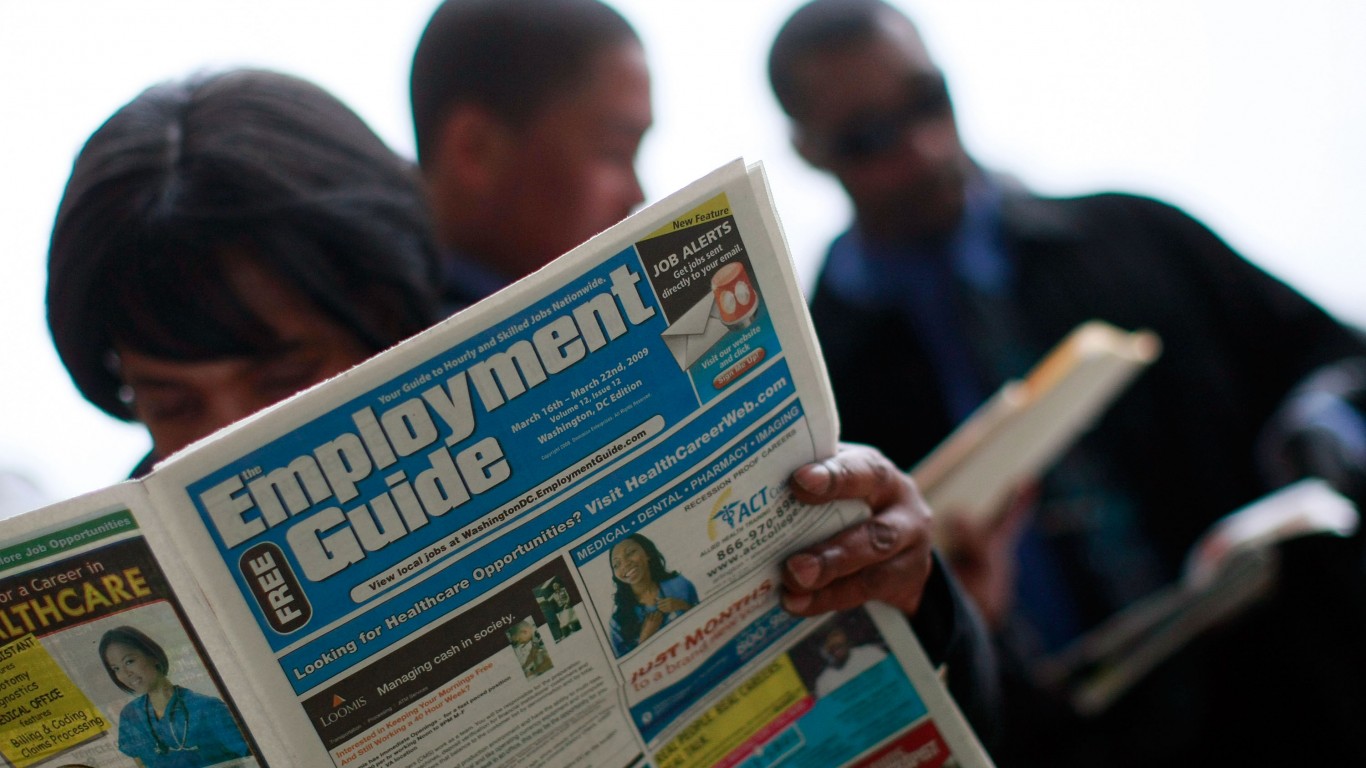
Sometimes it is best to reflect on economic numbers a couple of days after the fact. Friday’s unemployment and payrolls report from the Department of Labor showed that nonfarm payrolls rose by 156,000 in September. Some sources reported that this was significantly weaker than expectations, but the reality is that you have to factor in August’s payrolls revision from 151,000 to 167,000. Even if you factor in that July’s payrolls were revised lower to 252,000 from 275,000 the net revision was just a loss of 7,000.
This made the net-net change in nonfarm payrolls for September and the two prior revisions a gain of 149,000. Reuters had the consensus estimate at 175,000 for September’s nonfarm payrolls. Dow Jones had a consensus estimate of 172,000. Bloomberg’s consensus estimate was 168,000 and the Econoday range was 155,000 to 200,000.
Average hourly earnings rose 0.2% on the monthly reading in September, but year over year this number was up by 2.6%. The labor force participation rate ticked up to 62.9% in September after being 62.8% in August. What made the report stand out was the headline number of 5.0% unemployment.
If you want to look for a trend over time, the six-month average on payrolls slowed to 169,000 from 174,000. That is actually the weakest average since November 2012. So, just how aggressive does the Fed need to be?
Friday’s market reaction had been more aggressive at one point, but the S&P 500 closed down just 7.03 points at 2,153.74 and the Dow closed down 28 points at 18,240.49. Do either of these numbers feel like a market shocker?
Now we need to consider what ADP set for its trend. Private sector employment payrolls were shown on Wednesday to have increased by 154,000 jobs in September versus August. The September ADP National Employment Report precedes the Labor Department’s report by about 48 hours, and it should be used for a directional bias rather than for an absolute number.
There is a growing argument each month now that employers are having a hard time filling their open positions.
There are a few issues to consider here on the breakdown for September’s payroll creations. Manufacturing payrolls were down 13,000 after August’s 16,000 decline, and even the ever-growing government payrolls fell 11,000 in September. Construction rose by 23,000 and retail payrolls rose by 22,000. The key area was a 67,000 gain in professional and business services (with a gain of 23,000 in temporary help).
On Friday, Lindsey Piegza, who is the Chief Economist for Stifel Fixed Income, said:
This morning’s report offers no such confirmation that a second-round hike – at least at this point – is appropriate… Goldilocks would not approve: This morning’s employment report was not too hot, not too cold, but far from just right.
On its open calendar after the report, Bloomberg said:
The September employment report is not that strong and the sigh of relief you hear is coming from the Fed which won’t be faced with a pre-election rate hike. Non-farm payrolls rose 156,000, which is at the low end of expectations, while average hourly earnings don’t look that inflationary, at least not on a monthly basis which is up only 0.2 percent and again at the low end of expectations.
But there are definitely positives including a rise in the labor participation rate, up 1 tenth to 62.9 percent, which gave a deceptive lift to the unemployment rate that is 1 tenth higher at 5.0 percent. The increasing inclusion of discouraged workers is one of the Fed’s policy objectives and the participation rate points to improvement. Another positive is a rise in the workweek, up to 34.4 hours from 34.3 hours with the manufacturing week also slightly higher in what is a positive indication for September industrial production.
The reality is that the stock market and the bond market often put a lot of weighting on the monthly payrolls data each and every month. If they do not emphasize it enough, you can count on the politicians and the media to hype the number.
Friday’s payrolls perhaps deserves a Star Wars reference — these aren’t the droids we’re looking for.
Get Ready To Retire (Sponsored)
Start by taking a quick retirement quiz from SmartAsset that will match you with up to 3 financial advisors that serve your area and beyond in 5 minutes, or less.
Each advisor has been vetted by SmartAsset and is held to a fiduciary standard to act in your best interests.
Here’s how it works:
1. Answer SmartAsset advisor match quiz
2. Review your pre-screened matches at your leisure. Check out the advisors’ profiles.
3. Speak with advisors at no cost to you. Have an introductory call on the phone or introduction in person and choose whom to work with in the future
Get started right here.
Thank you for reading! Have some feedback for us?
Contact the 24/7 Wall St. editorial team.


